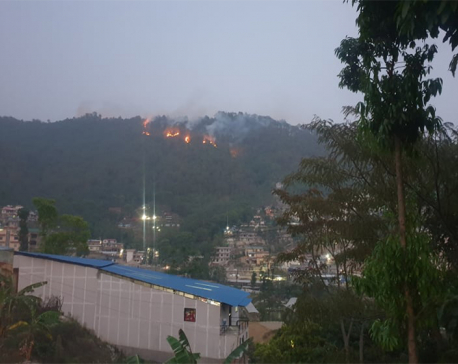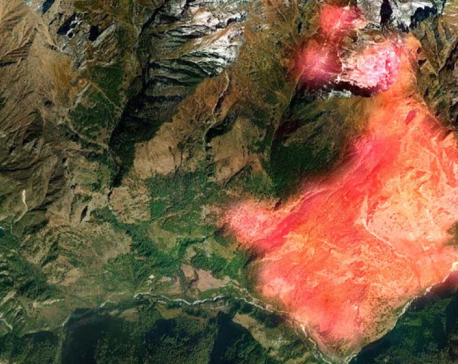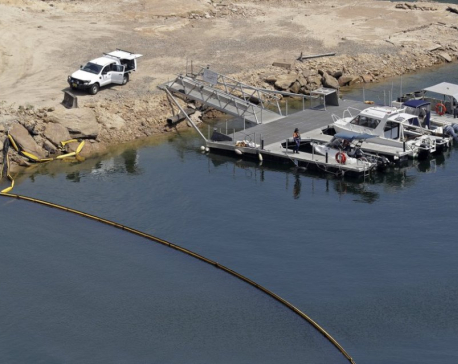
OR
Opinion
Catastrophic Effects of Uncontrolled Forest Fires
Published On: May 9, 2023 08:00 AM NPT By: Pratik Bhattarai


Pratik Bhattarai
The author is a Program Support Assistant at an NGO based in Kathmandu.news@myrepublica.com
Natural disasters such as forest fires can cause significant damage to both the natural areas and livelihoods. These uncontrolled and rapidly spreading combustions consume the natural fuels of a forest, posing a threat not only to the forest wealth but also to the entire flora and fauna, disturbing the biodiversity, ecology, and environment of the region.
Fires are most common during the dry season, especially during droughts, and occur mostly in the summer and autumn. Persistent dry periods with high evaporation and low precipitation increase the risk of forest fires. The causes of forest fires can be either natural or artificial. Natural causes include lightning, rolling of stones, environmental factors, accumulation of biomass, topography, and more. However, up to 90 percent of wildfires are caused by human activities, primarily through uncontrolled use of fire for clearing forest and woodland for agriculture, maintaining grasslands for livestock management, extraction of non-wood forest products, industrial development, resettlement, and more.
Other activities such as burning for renewing the vegetation, throwing of cigarettes, burning matchsticks, electric sparks, or any source of ignition in contact with inflammable materials are the artificial causes responsible for forest fires. Some forest fires are also set by hunters and poachers to clear vegetation for a better sight of prey, namely Wild pig (Sus scrofa), Deer (Axis axis), Wild dog (Cuon alpinus), etc. In developing countries like Nepal, traditional communities use fire as a tool for burning organic matter and agricultural residue to prepare the ground for the next crop cultivation. However, such fires can spread from agricultural lands to the forest, village settlement, and cause significant damage to property, including wildlife and humans. It is crucial to understand the causes of forest fires and take necessary precautions to prevent them. This includes proper management of forest resources, controlled use of fire, and awareness campaigns to educate people about the dangers posed by uncontrolled fires.
Nepal, a country with a lush green cover spanning 44.74% of its total land area, has been plagued by recurring forest fires. According to the data recorded by the Department of Forest and Soil Conservation (DOFSC), Nepal has suffered one of the worst forest fires this season. For the past several days, there have been approximately 500 daily incidents of forest fires. On 20th April 2023, 379 fires were recorded on a single day in 17 different districts as per the data of DOFSC. These fires have been ravaging national parks and protected areas across the country, posing a significant threat to the survival of endangered flora and fauna. Wildfires have ravaged the forests in various regions of the Terai, including Chitwan, Parsa, and Pyuthan. The department has reported that these fires are also currently active in the hilly areas of the country. Every year, the country loses approximately 400,000 hectares of forest area due to devastating wildfires. These fires pose a great challenge to forest and biodiversity conservation efforts, as they erase precious ecosystems and threaten the survival of countless species. Additionally, the intense heat, smoke, and flames released during these fires emit a plethora of harmful pollutants that can have adverse effects on human health.
Recent reports from the BBC have shown that the tiny particles released in wildfire smoke can be up to ten times more harmful than those released from other sources, such as vehicle exhausts. This highlights the urgent need for increased efforts to prevent and mitigate the impact of wildfires on our environment and communities. The rampant wildfires in Nepal have caused a significant decline in air quality. In fact, according to IQAir, Kathmandu was ranked as the most polluted city in the world during last week, specifically on 16th and 17th April, 2023. The Valley was covered in smoke and haze, resulting in an Air Quality Index (AQI) reading of 216, which is considered to be at a very unhealthy level. When the air quality is deemed very unhealthy, it can lead to emergency health warnings that affect the entire population.
Air pollution is a well-known culprit for causing a variety of respiratory illnesses, such as pneumonia, bronchitis, conjunctivitis, skin allergies, stroke, and heart problems. In the long run, it can lead to cancer of the lungs and intestine, kidney disease, and heart problems. In Kathmandu Valley, many individuals have reported experiencing dry and burning eyes, irritated nose and sinuses, sore throat, wheezing cough, and difficulty breathing due to the polluted air. In recent times, there has been a surge in the number of Covid-19 cases as well. Health experts have issued a warning that the deteriorating air quality could exacerbate the situation, resulting in a rise in hospitalizations and fatalities among those infected with the virus.
Forest fire can lead to change in microclimate of the area with unhealthy living conditions, loss of valuable timber, Non-Timber Forest Products (NTFPs), loss of natural regeneration, and a great reduction in the forest cover. Forest fires can have devastating effects on the environment, leading to the loss of carbon sink resources and an increase in the concentration of carbon dioxide in the atmosphere. This in turn, can contribute to rise in temperature, damage to the ecosystem and many more disastrous effects.
You May Like This

Fighting the menace of forest fires
With the dry season almost at its peak, the incidents of wildfires have already become daily occurrences in Nepal. These... Read More...

Fire destroys around 800 hectares of forest in Manang in past five days
KATHMANDU, Jan 30: A forest fire in Manang has destroyed around 800 hectares of forest in the past five days. Read More...

As forests burn around the world, drinking water is at risk
Jan 31: Fabric curtains stretch across the huge Warragamba Dam to trap ash and sediment expected to wash off wildfire-scorched... Read More...











Just In
- Japanese envoy calls on Minister Bhattarai, discusses further enhancing exchange through education between Japan and Nepal
- Heavy rainfall likely in Bagmati and Sudurpaschim provinces
- Bangladesh protest leaders taken from hospital by police
- Challenges Confronting the New Coalition
- NRB introduces cautiously flexible measures to address ongoing slowdown in various economic sectors
- Forced Covid-19 cremations: is it too late for redemption?
- NRB to provide collateral-free loans to foreign employment seekers
- NEB to publish Grade 12 results next week







Leave A Comment